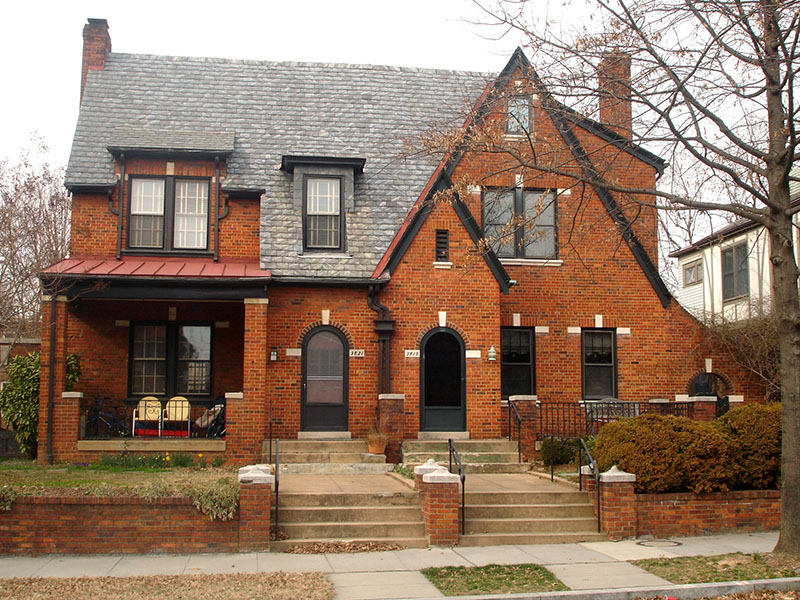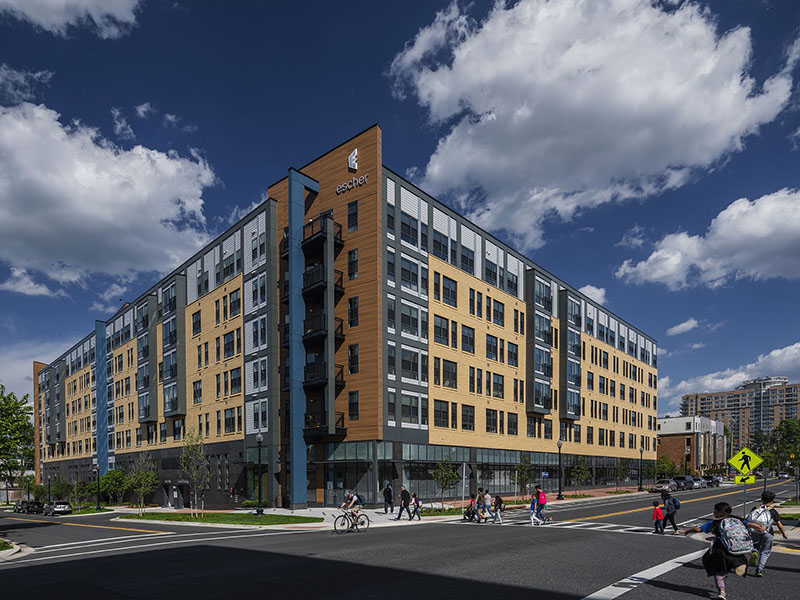By Artie Harris, Montgomery County Planning Board Chair and Jason K. Sartori, Montgomery Planning Director
This blog is also published in Greater Greater Washington as a guest opinion column.
Bold action by governments to tackle the country’s housing crisis has been scarce for far too long. The Biden administration is fed up too, calling for federal policies that would incentivize local governments to end discriminatory single-family home zoning.
The Montgomery County Planning Board believes it is about time Montgomery County joined a national movement to break free from outdated laws that constrain housing supply and prices too many people out of the market.
On June 13, the Planning Board voted to recommend that the Montgomery County Council relax single-family zoning and unravel decades-old rules restricting large swaths of the county to one single-family home per lot. The county would be a pioneer in Maryland to broaden the permitted housing types in most residential areas.
Not enough room for all
The 1990s saw a sharp drop-off in new home construction in the county – 40,000 fewer homes were built compared to the 1980s. The 2000s have continued the trend
The supply crunch has led to skyrocketing prices. Last year, detached houses in Montgomery County sold for an average of $970,000 – twice the national average. Not surprisingly, Montgomery County has seen its middle-income population decrease by more than 25,000 people since 2005, as the price of homeownership has increasingly become out-of-reach for these residents. Consistent with this, Maryland’s housing secretary Jacob Day recently noted that about a third of younger residents are considering leaving the state because of high housing costs.
Meanwhile, Montgomery County has little open land left to build on and, with detached housing composing almost half of the county’s housing stock, too few options to offer. People of all ages and income levels need more “middle” choices to bridge the gap between high-rise apartment buildings and single-family detached houses.
The kinds of smaller, less expensive homes that many people seek – duplexes, triplexes, quadplexes, townhouses and small apartment buildings – are illegal to build in most of the DC suburbs, including Montgomery County. Even when someone can afford to rent or buy a home, few if any are available in the right size, price, and location.
Taking action
Following the Planning Board’s June 13 vote, the Montgomery County Council is expected to take up Montgomery Planning’s Attainable Housing Strategies, an initiative launched at the council’s direction to explore greater opportunities for Missing Middle housing.
Allowing smaller, less costly attached homes to be built in residential neighborhoods will increase our housing supply, bring down rents and home prices, and use our remaining buildable land more efficiently.
This is not about building subsidized housing for low-income residents, though we are working on that, too. These would be market-rate homes that would be more attainable to more people compared to the new replacement homes going up in existing neighborhoods throughout the county. Buildings divided into duplexes, triplexes, and quadplexes would blend into surrounding neighborhoods, and design standards would make many of them look like large single-family homes.
The national movement
A growing number of jurisdictions have enacted similar changes to combat severe housing shortages and soaring home prices. They include Minneapolis, Minnesota; Portland, Oregon; Durham, North Carolina; Austin, Texas; and the states of California, Washington, Oregon, and Maine. Arlington County recently approved up to six units for most residential lots, and the city of Alexandria now allows as many as four units per lot.
As the DC region continues to grow and thrive, we can no longer afford to devote so much land to so few people. Unless we make room for current and new residents, our communities will only become more expensive and less diverse, and our businesses will have more trouble retaining the skilled workers upon which they depend.
There are so many government policies intended to support strong, inclusive communities. But can we achieve that if existing zoning laws create communities where only the most fortunate among us can own a home and build wealth?
It’s time to give everyone a chance to call Montgomery County home.
 About the authors
About the authorsBefore his appointment as Planning Board Chair in 2023, Artie Harris was the vice president of real estate at Montgomery Housing Partnership, Inc. (MHP), a nonprofit real estate development organization based in Silver Spring, MD, that creates affordable communities in Montgomery County and surrounding jurisdictions. Previously, Harris was a vice president at Bozzuto Development Company, where he led teams developing market-rate and mixed-income housing projects across the Washington, DC region and beyond. He holds a master’s degree in business administration from Stanford University and a master’s degree in civil engineering from Purdue University.

Jason Sartori joined Montgomery Planning in January 2016 and served as the Chief of the Countywide Planning and Policy (CPP) Division from 2019 to 2023 before his appointment as Planning Director in 2023. Jason previously served as the Associate Director of the National Center for Smart Growth at the University of Maryland. While there, he led numerous projects related to affordable housing, transportation modeling, opportunity accessibility metrics, economic development, and growth visioning and scenario evaluation.



Mona Grieser
While I heartily approve the Planning Board’s efforts to increase housing, please remember that unless certain modest features of Universal design (UD)are included, the elderly still cannot move out of their single family homes and increase housing stock that way. These minimum UD features include: a) one bedroom large enough to accommodate a wheelchair or walker besides the bed on the ground floor; one nostep shower on the ground floor; all doors, hallways wide enough for wheelchair; accessible front door (no steps). Bathroom walls strong enough to hold grab bar, if client wishes to later install them. Power outlets in kitchen and bedroom waist high for easy access, and lever handles instead of knobs on doors. Pull-out drawers in kitchens. Ideally but not as urgent, internet and Bluetooth capability. There are of course a great many other features that would help the disabled and elderly but these would address longevity of all persons in the County. Even younger people get old, fall down, become disabled and without these features will end up in expensive assisted living facilities, depleting their resources. Finally build in climate change features—double paned windows to preserve heat and cold; geothermal heat pumps to reduce the cost of energy for seniors; rent control already in the works is a great idea.